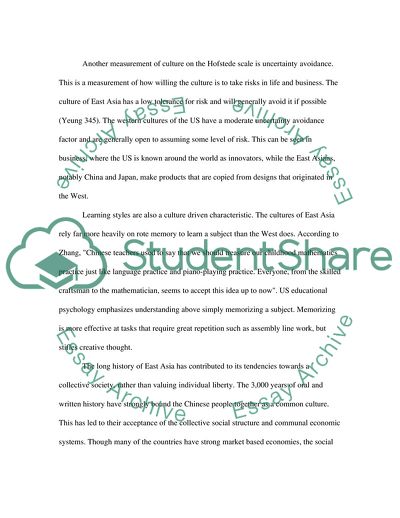East Asia Culture Analysis: Racial Profiling Research Proposal Example | Topics and Well Written Essays - 1500 words. https://studentshare.org/culture/1722061-east-asia-culture-analysis
East Asia Culture Analysis: Racial Profiling Research Proposal Example | Topics and Well Written Essays - 1500 Words. https://studentshare.org/culture/1722061-east-asia-culture-analysis.


